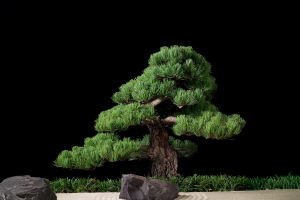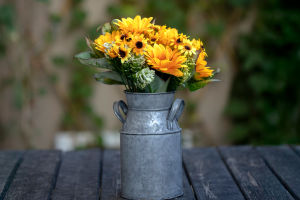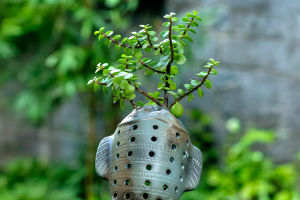Shopping for a new sofa—what matters first: sink-in comfort or statement style? In 2025, you can have both. Designers are leaning into expressive shapes, tactile fabrics, and richer color while keeping construction honest and durable.
Use these trends as a filter to find a piece that suits daily life and still feels special.
Why It Matters
A sofa anchors sightlines, sets color direction, and shapes how a room is used. The right choice supports conversation, lounging, and long movie nights. The wrong one becomes costly clutter. Think of this list as a design brief: choose the ideas that fit your space, light, and habits.
Luxe Textures
Velvet, linen, tweed, and bouclé headline 2025 because they add depth without busy pattern. Low-sheen velvets in chocolate, terracotta, or moss feel elevated yet forgiving. Linen keeps silhouettes relaxed and breathable. Mix a plush main fabric with textured pillows so the sofa reads rich from any angle.
Curved Forms
Soft, sculptural lines continue to rise—from subtle radius arms to full crescent sectionals. Curves invite conversation by turning seats toward one another and reduce hard visual edges in open plans. If space is tight, try a petite kidney sofa or a gently bowed loveseat that tucks into corners.
Skirted Ease
Slipcovered and skirted bases return with a polished, unfussy attitude. Tailored box-pleat skirts suit modern classics; looser skirts nod to coastal calm. Beyond looks, skirts hide dust lines and wiring. Choose a washable cover for real life; performance linen and cotton blends balance texture and care.
Pillow Backs
Pillow-back and roll-arm styles emphasize comfort over rigid formality. Oversized back cushions let each person “tune” support, great for reading or napping. Expect some fluffing; specify resilient fills (foam core with feather/down wrap or high-loft microfibers) to keep profiles from collapsing.
Contrast Trim
Designers are using piping, banding, or fringe to outline silhouettes. A tonal welt is subtle; a contrasting welt makes lines pop and gives even neutrals personality. Trim also helps visually “finish” soft fabrics like linen. Keep trim color echoed elsewhere—on a pillow edge or curtain tape—for cohesion.
Earth Tones
The palette leans warm and grounded: cocoa, rust, umber, olive, and clay. These hues flatter skin tones, pair well with wood, and age gracefully. If you prefer light, try biscuit, oat, or butter tones that feel sunny, not stark. Use cool accents sparingly to avoid clashing undertones.
Bold Pattern
Patterned upholstery—stripes, small-scale geometrics, folk motifs—adds character without wallpapering a room. Small repeats read quieter; large repeats make a focal point. Balance prints with solid pillows and a calm rug. Patterned performance fabrics now resist stains better, making them practical, not precious.
Custom Color
More buyers are commissioning custom upholstery to nail size, fabric, and finish. Personalization solves awkward rooms, aligns undertones with paint and flooring, and avoids generic “set” looks. If full custom isn’t feasible, semi-custom programs let you pick arms, legs, depths, and dozens of fabrics.
Retro Notes
Nostalgic details—channel backs, woven cane insets, mid-century legs, and even discreet fringe—are back, used sparingly. The key is editing: one vintage gesture on an otherwise clean silhouette feels fresh; five compete. Let the sofa reference history while the room reads current.
Deep Seats
Extra-deep, lounge-friendly cushions are everywhere, often paired with lower seat heights. Before committing, test ergonomics: a 55–60 cm seat depth suits upright sitters; 60–70+ cm invites lounging with pillows. If household heights vary, choose modular back pillows to fine-tune support.
Colors Now
Beyond earth shades, designers favor inky blues, bottle greens, and caramel velvets for drama that still lives well. Butter yellow and soft sky appear in lighter rooms. What’s fading: flat grays that skew cold under LEDs and bright whites that show wear quickly.
What’s Fading
Matchy sofa-loveseat-chair sets feel dated; curated mixes win. Overly sculptural “perch” sofas that discourage relaxing are giving way to pieces that prioritize real comfort. High-gloss fabrics that show every mark are losing ground to matte textures with better hand and durability.
Buying Smarts
Frame: kiln-dried hardwood with corner blocks resists warping.
Suspension: eight-way hand-tied or quality webbing for balanced support.
Cushions: look for high-resilience foam cores wrapped in feather/down or advanced microfiber.
Fabric: check abrasion (e.g., >30,000 double rubs) and cleanability; performance finishes help busy homes.
Scale: keep 90–100 cm walk paths; choose a rug large enough for front legs of seating to land on.
Expert Views
Upholstery specialists emphasize construction over trend—solid hardwood frames and replaceable cushion cores significantly extend a sofa’s lifespan. Color consultants recommend testing fabric samples at home, since undertones shift depending on wall color and light temperature.
Ergonomics experts advise matching seat depth and height to the user’s body dimensions and intended use to prevent strain and improve comfort. The American Society of Interior Designers (ASID) notes that thoughtful design influences how people live, work, and maintain well-being.
Sustainability pros favor reupholster-ready frames and fabrics with transparent performance data. Together, these perspectives echo the 2025 brief: expressive, yes—yet comfortable, serviceable, and built to last.
Conclusion
This year’s best sofas marry personality with practicality: curved silhouettes, tactile fabrics, warm palettes, thoughtful trim, and restorative depths. Start by choosing the comfort profile you need, then layer in color, texture, and detail to express your style. Which trend will you bring home first—curves, texture, or a richer hue that anchors the entire room?


